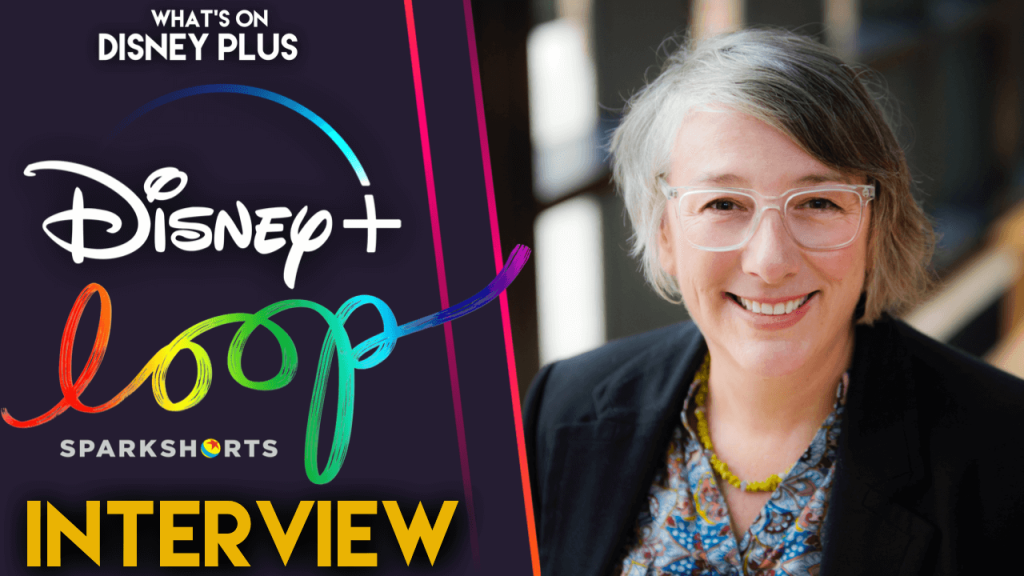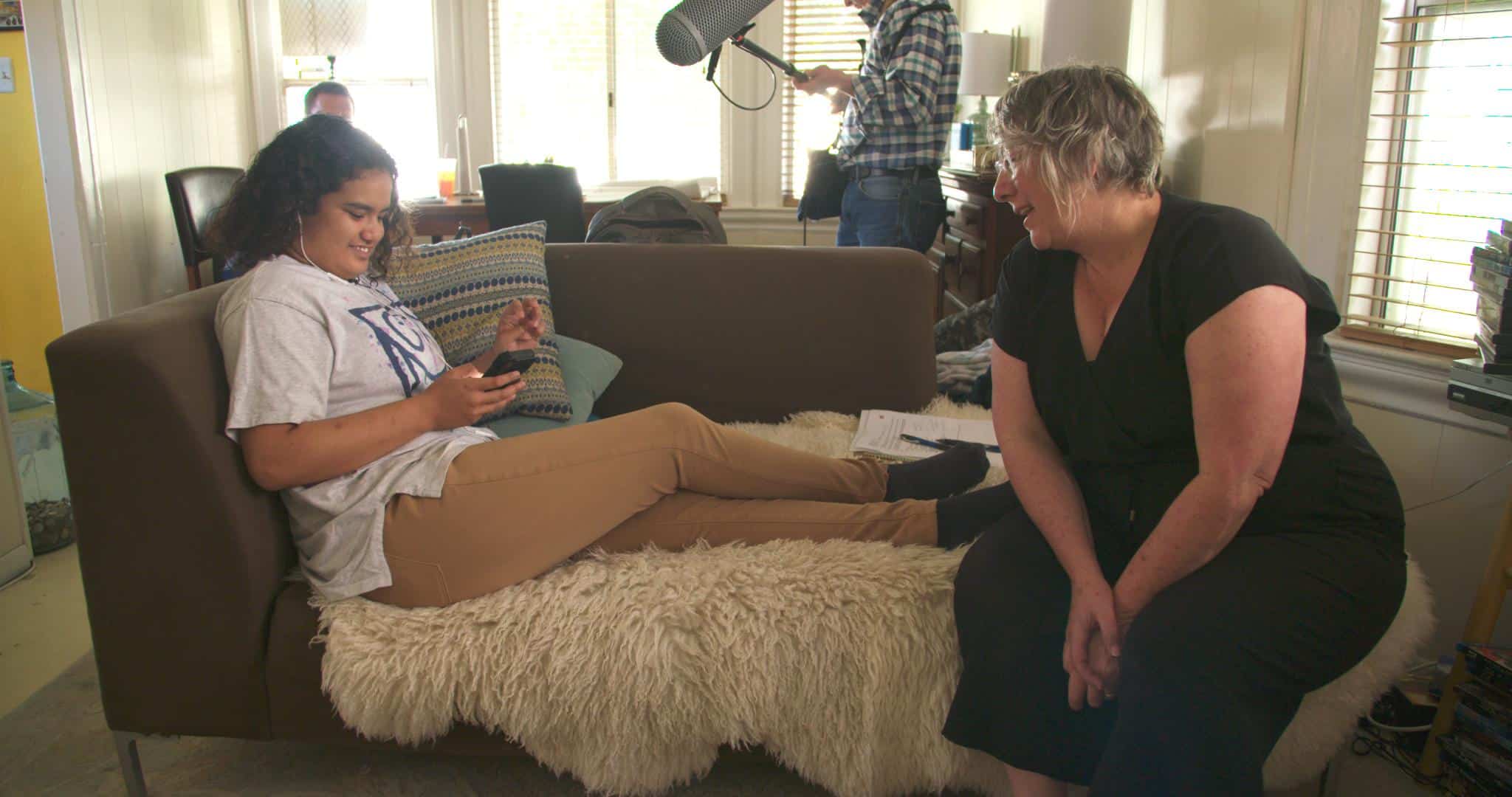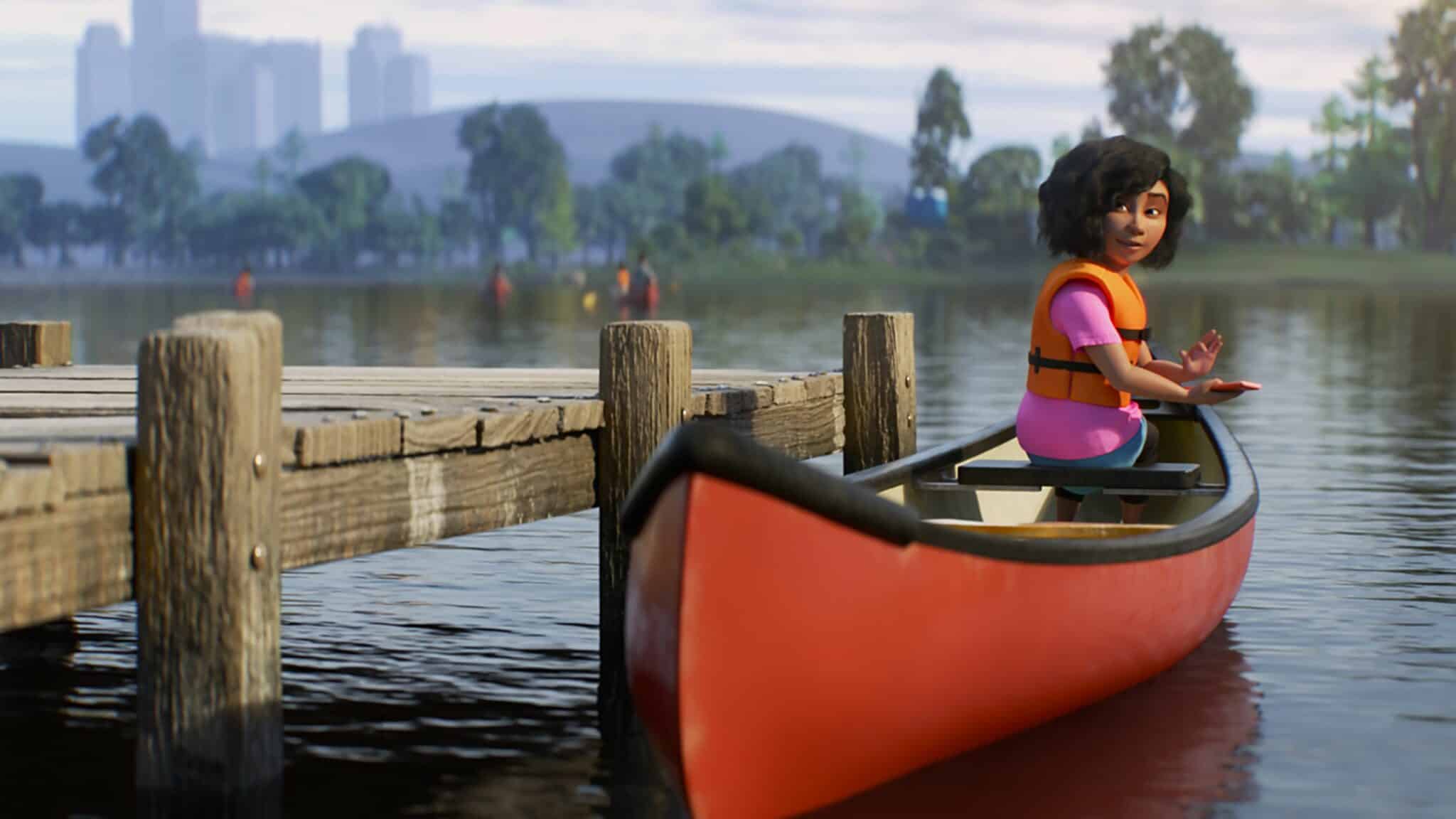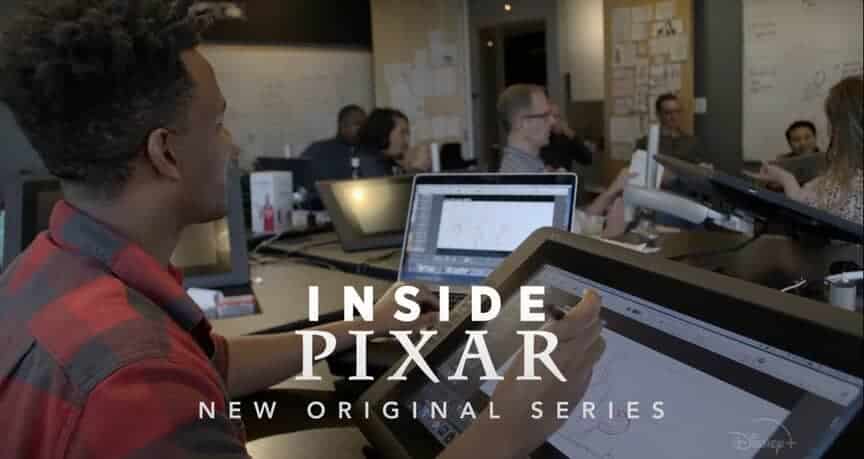
EXCLUSIVE | Looking Back on Pixar’s LOOP with Director Erica Milsom
For over two decades, Disney and Pixar have collaborated to tell inventive, inspiring, and deeply personal stories. The Disney+ service has allowed Pixar to further expand on their slate of original content, beginning with the release of all-new SparkShorts short films. One such SparkShort, LOOP, tells the story of a non-verbal autistic girl on a canoeing trip with a chatty boy. To celebrate the 2-year anniversary of Pixar’s LOOP, I sat down to talk with the short film’s director, Erica Milsom, and you can read our full conversation below:
Hey Erica! Thanks for chatting with us. Let’s take things back in time a bit – when did you first get involved with Pixar, and how did you get connected with the SparkShorts project?
I started working at Pixar as a freelance Assistant Editor for the documentary MAKING NEMO in 2003 and continued freelancing through Incredibles and Cars. I was promoted to a permanent documentary director role that began with Ratatouille. From that time forward, I worked with the AWESOME Pixar in-house documentary crew on films and museum installations that illuminated the studio’s creative process.
In early 2018, I approached Jim Morris, the President of Pixar, with an idea for a story that featured a character who communicated with assistive technology as SparkShort. He was intrigued by the idea and connected me with Lindsey Collins and David Lally, the EPs for the SparkShorts Project, who loved the idea. I wrote the first few versions of the script, and we launched into production a few months later.
I had no idea that Pixar was so heavily involved in documentary filmmaking, but I love how SparkShorts included a diverse group of storytellers from across the Pixar brand. How did working on LOOP stretch your filmmaking abilities?
This is a great question. First, after years of telling stories about HOW animation was made, working with an animation crew to tell this story gave me a whole new appreciation of the medium. I love filmmaking because it is a collaborative effort — any film crew you are a part of works best if they are a pack, working together towards their goal. And I’d been really loving the small crew of documentarians I worked with throughout my career. But there is no more collaborative thing than making animated movies! The degree to which you have to cross boundaries of art, technology, storytelling, aesthetics, and in the case of LOOP, identity and communication differences, is unparalleled. And when you are successful in that effort – being both clear and inclusive — the team can do magnificent things.
I learned a million lessons throughout the production from the crew, and I am grateful for all of those lessons. (Pixar’s artists are both brilliant and GENEROUS creators!) But the biggest learning I took from LOOP was a personal one. In making LOOP the most important thing for me was to be truthful and authentic in our portrayal of these two characters whose identities I didn’t represent. To do so, I needed to learn from autistic people how they experienced the world AND draw upon my relationships with young black men who loved canoeing to create a bridge of understanding between all of us, including a very large crew.
In the early stages, creating that bridge meant meeting with autistic people and listening to their experiences and their reactions to my script, as well as diving deep into the #actuallyautistic conversations on social media. Also, I spent time at a non-profit I loved, Waterside Workshops, listening to the kids who worked there in the boat shop. As the story formalized, it meant bouncing the story reels off our consultants at the Autistic Self Advocacy Network, taking their notes and observations, and adapting our story accordingly. And as the process continued, the producers and I realized it was essential to find a way to share this growing compendium of insights with a larger and larger crew. We ended up putting together an introductory keynote that reviewed the characteristics of Autism, as defined by the Autistic Self Advocacy Network, and that stepped through the story, illustrating how we were seeking to portray those characteristics in Renee’s story. We took our animation team out to the workshop that inspired the location and the character of Marcus, and we all hung out together and went canoeing. In each stage of this deeply collaborative process, each artist would begin with a shared experience of hearing from people whose identities were different than their own.
Sometimes I would worry that I was explaining too much or repeating myself. But I think the truth is when you are a director, and you have something essential to your story, you must hold it up high, like a big, beautiful flag. That means you must find the confidence to say YES – this is our purpose – and then inspire a crew to share that purpose. But directors must also lay the groundwork for the crew to be on that same path with you, and the best way to do that is to cherish the idea that they are curious, openhearted, and interested in learning new lessons. Because that’s what great artists do. They grow.

Your passion and intentionality are immediately evident in LOOP, and I love how the collaborative process of animation brings so many different perspectives together. It’s hard to believe that it has been two years already since LOOP was released on Disney+. Even though various aspects of our world look a lot different from early 2020, how do you find the message of LOOP continuing to connect with audiences since the COVID pandemic?
Wow. Another great question! I think, after these last few years of the whole world being more insular and guarded through the pandemic, LOOP reminds us that there’s power in exploring the unknown in your life — both the world around you and the world between us as humans. It’s a testament to the idea that no matter where you are, there are unexpected connections to be made.
And on a functional level, I’ve been floored that this 8-minute animated short has remained so active in the world for the last two years. I still receive notes from people about the story almost weekly, some letters of appreciation and support, and some requests to use the film in their communities to accompany inclusion campaigns. I feel so grateful for that. I think all of us who tell stories hope that the stories provoke something deep that lives on beyond the screen. As far as I can tell, LOOP did that. So yay for all of us who made it together.
In a world that often feels so disconnected, it’s always refreshing to find something like LOOP that brings people together and tells an inclusive story. Watching LOOP has also connected me with your directing work for the short film SO MUCH YELLOW, which tells an intimate story of children with Down Syndrome. How do films like LOOP and SO MUCH YELLOW bring awareness to these important but often less-discussed stories?
Aww. Thank you for watching SO MUCH YELLOW. That film was my first foray into fiction filmmaking, drawing upon my documentary background to explore true stories and then adapt them as fiction. My goal with that film, which was about a small family on the day they institutionalized their young son who has Down syndrome, was to let the audience have a DEEPLY HUMAN experience of a story that hasn’t been told very often. I had worked in disability services in the 90s, just after the United States shut down institutions, so I was lucky to meet many interesting people who had gone through this experience. I’d never seen their story on screen portrayed as anything other than a horror story. And yet, they were people with very nuanced experiences full of love, loss, confusion, and redemption. I wanted to approach this story from a very small, human perspective of what it means to lose someone you love. And, at the same time, to be lost. LOOP has a similar ‘human scale’ goal – to fully envelope an audience in an experience that is essentially very private, as two kids find a way to connect.
In each case, we worked hard to give the audience a POINT OF VIEW-based experience, where they stepped outside their reality and into someone else’s. And, for me, that changes what awareness means. Instead of looking at someone’s experience from the outside, hopefully, you sink into it.
Wow! I love getting to see these raw, human experiences portrayed through film. As we mentioned earlier, your work spans both live-action and animated media, and I have also enjoyed your live-action Disney+ documentaries INSIDE PIXAR and EMBRACE THE PANDA. How does your directing style differ between the two formats, and which do you find more fun?
Hehehe. Such a great question. I have to say – I LOVE all those formats. And they play into each other for me as a writer and director. The feeling of truth and genuine humanity you find in a documentary is important for me to always search for in animation. No matter how far-fetched the stories I tell in future animated films, I want the audience to feel grounded in a truth that feels so human that you see yourself in the story. And then, the playfulness and heightened expression intrinsic to animation lend something so powerful to a documentary. As I progressed in that form, I was always looking for ways to amplify the surprise and delight of the story — to be playful, daring, and artful, while still telling a really truthful story.
Animation has always been a medium that breaks barriers, and it’s great to see so many unique stories portrayed through that medium. I always like to end these interviews by asking you what’s next, and I noticed that you recently started a new venture at Ryzo Animation Studios. Congrats! What exciting plans do you have for the Studios?
Thank you for asking! We are in a time where so many of the world’s problems can seem overwhelming. We need stories that move us forward, connect us across barriers and give us a way to work toward new solutions. At Ryzo, we believe animation has a special power that can bypass some of the resistance and fear we feel about our future, about each other, and about the world. We created Ryzo Studios to tell fiercely entertaining animated stories that move you and move you to act. Our slate of feature films takes on the big questions of our time in animated fiction films and then chases those stories with activations that give the audience a way to further engage with the story’s themes. I’m so excited to be pulling together artists from around the world to explore the big questions and find new ways to engage with them in an imaginative, optimistic manner.
I am so excited to see what’s on the horizon for Ryzo Studios, and I will definitely be looking out for your name on future projects! Thanks so much for sitting down to chat about LOOP and your Pixar story!
And, to the reader, you can stream Pixar’s LOOP now on Disney+.





